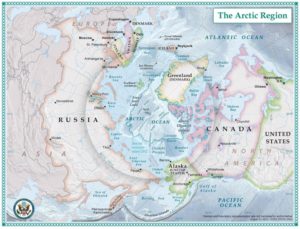Antarctica and Ice Loss
I love storyboards, which combine audio, video photos and maps to cover a topic in an interactive manner. The New York Times has an outstanding storyboard on Antarctica, which would be a great resource for an introductory class. I particularly liked the beautiful maps which showed the direction of ice flow by flowing colored lines, which became animated when clicked upon. In part two, another map reveals how much of Antarctica is actually ice, through a map that allows the viewer to strip away the ice cover to reveals the mountains and bedrock underneath. What had seemed to be a unitary continent is revealed to be a world of islands and peninsulas. The second immersive video, in which they fly past a six mile long iceberg, is also striking. Through the window you can see dramatic imagery, but when you swivel the camera back to the pilots they seem quite bored. The three part series ends with four videos, which are narrated. The first is covers a dive underneath the ice, which has spectacular images of an otherworldly environment, and will allow you to briefly escape your workaday world.
Shawn Smallman, 2017





